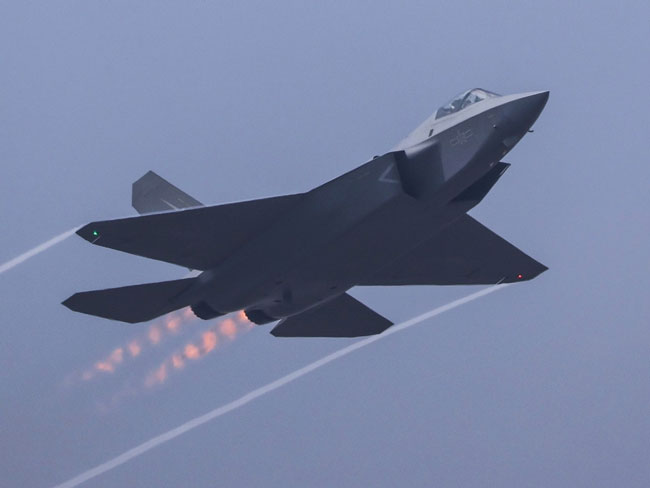Pakistan has approved the plan to purchase 40 J-35 fifth-generation stealth fighter jets from China, a move likely to intensify the competition in the defense sector between India and Pakistan. The jets are expected to be delivered to Pakistan within the next two years. The J-35 is an upgraded version of China’s J-31, designed with the purpose of being sold to foreign nations. According to Chinese experts, with the delivery of these jets, Pakistan is expected to surpass India in aerial capabilities by 12 years.
According to a report by South China Morning Post (SCMP), the J-35 is designed to excel in air superiority as well as strike ground and maritime targets. It incorporates next-generation avionics and advanced stealth technology. SCMP mentions that these jets are intended to replace Pakistan’s aging American F-16 and French Mirage fighter jets. This marks the first export of fifth-generation fighter jets by China to a friendly nation. Defense experts believe this move could alter the power balance in South Asia.
Strategic Move by Pakistan The Pakistan Air Force (PAF) has already begun training its pilots in China for the J-35. In January, Pakistan’s Air Chief Marshal Zaheer Ahmed Babar Sidhu stated that the foundation for acquiring the J-35 has already been laid. According to SCMP, the deployment of these jets could provide Pakistan with a strategic edge over India for the next 12-14 years. However, some experts suggest this advantage may last for only 7-8 years. Despite facing severe economic challenges, Pakistan is proceeding with the purchase of these new jets.
No official confirmation has been made in Beijing, nor has any mention of this deal appeared in Chinese state media. The J-35 is primarily considered a fighter jet for Chinese aircraft carriers. The aircraft was showcased at the annual air show in Zhuhai last month, where top PAF officials were present. China is currently the only country in the region to have developed stealth aircraft. China and Pakistan share deep military ties, with China assisting in modernizing Pakistan’s armed forces. China also helped Pakistan jointly develop and operate the J-17 Thunder fighter jet.
India’s Indigenous Plan In contrast, India is focusing on its indigenous Advanced Medium Combat Aircraft (AMCA) program to develop its own fifth-generation fighter jets. According to the 2024-25 report by the Parliamentary Standing Committee on Defense, deliveries of the AMCA jets are expected to begin in the next decade. However, the Defense Research and Development Organization (DRDO) is facing several technical and timeline-related challenges in this project.
Expert Opinions Brendan Mulvaney, Director of the China Aerospace Studies Institute, told SCMP, “Pakistan’s move signals a shift away from Western countries and a tilt toward China.” However, he also mentioned that the effectiveness of the J-35 would depend on the weapons, sensors, and C4ISR (Command, Control, Communications, Computers, Intelligence, Surveillance, and Reconnaissance) systems provided by China. Critics have raised concerns about Pakistan’s economic situation and its ability to maintain such advanced platforms.
Pakistan’s Economic Struggles Pakistan is grappling with severe economic issues, including mounting debt and widespread hunger, but its desire to match India militarily remains a priority. According to a recent World Bank report, China is Pakistan’s largest creditor, lending nearly $29 billion, followed by Saudi Arabia with approximately $9.16 billion. The report also notes that China’s share of Pakistan’s total foreign debt has decreased from 25% in 2023 to 22% in 2024, while Saudi Arabia’s share has increased from 2% in 2023 to 7% in 2024.
Impact on Regional Power Balance The competition between India and Pakistan over these fighter jets highlights a divergence in their defense strategies. While Pakistan is rapidly moving toward acquiring the J-35 and strengthening its defense ties with China, India is focusing on developing its indigenous capabilities. However, in the long term, the operation and maintenance of these jets may pose a significant challenge for Pakistan. On the other hand, India’s indigenous program could play a crucial role in promoting self-reliance in the future.




